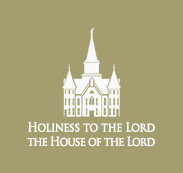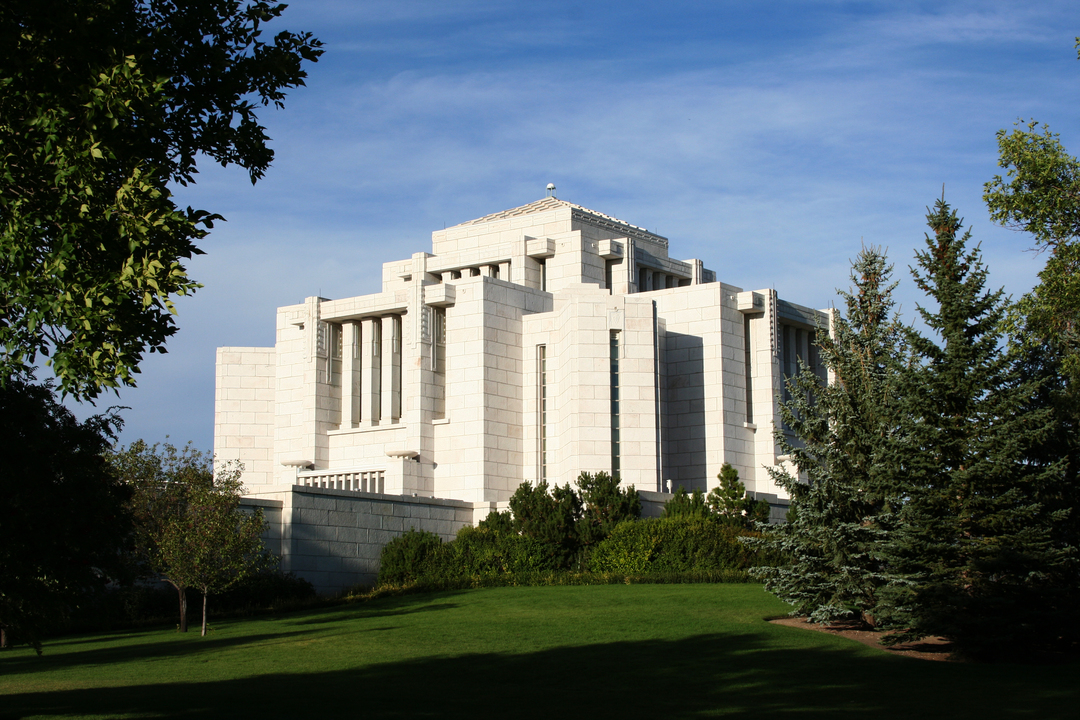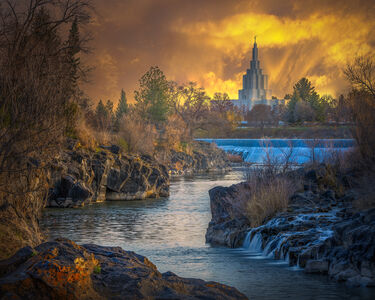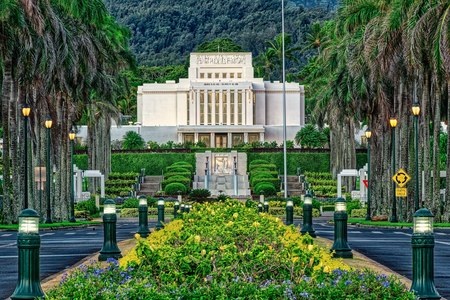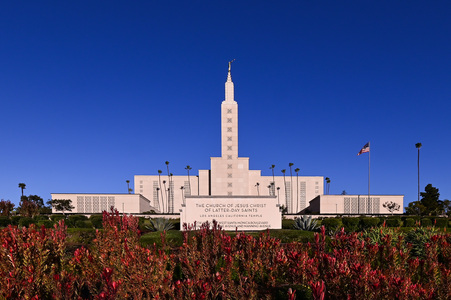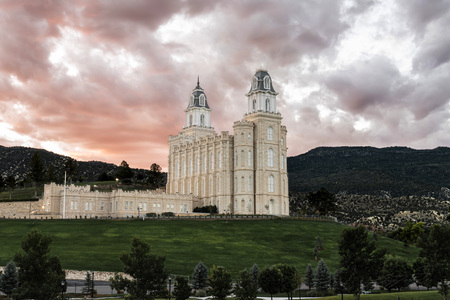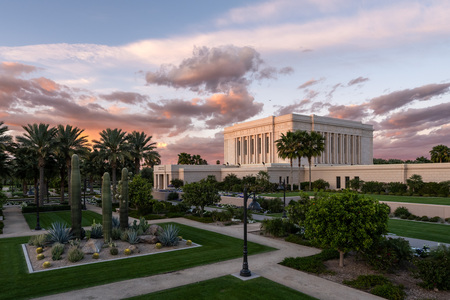Services
NO visitors' center open to the publicNO arrival center available
NO patron housing available
Distribution center on site (Store Locator)
Announcement:
27 June 1913Site Dedication:
27 July 1913 by Joseph F. SmithGroundbreaking:
9 November 1913 by Daniel Kent GreenePublic Open House:
Tours offered during the final years of construction (1920–1923)Dedication:
26–29 August 1923 by Heber J. GrantRededication:
2 July 1962 by Hugh B. Brown (addition only)Public Open House:
6–15 June 1991Rededication:
22–24 June 1991 by Gordon B. HinckleySite:
10 acres | 4.0 hectaresExterior Finish:
White granite quarried from a site near Kootenai Lakes in Nelson, British Columbia. Every stone was hand-hewn. Additions have been made of precast graniteArchitectural Features:
Single attached central tower with a pyramid roofOrdinance Rooms:
Four instruction rooms (four-stage progressive), five sealing rooms, and one baptistryTotal Floor Area:
88,562 square feet | 8,228 square metersHeight:
85 feet | 25.9 metersElevation:
3,780 feet | 1,152 metersTemple Locale
The Cardston Alberta Temple is a historic Alberta landmark that stands on elevated ground in the center of Cardston. Founded by settlers of The Church of Jesus Christ of Latter-day Saints in 1887, the small community lies just 15 miles north of the U.S.-Canada border on southern Alberta's fertile plains. Outside the gates of the temple, a public visitors' center (operated in the summer) offers several displays including construction photographs dating to the early 1900s.
Temple Facts
The Cardston Alberta Temple was the first temple built in Canada, which, at the time, belonged to the British Empire.
The Cardston Alberta Temple was the first temple built outside of the United States.
The Cardston Alberta Temple was the first temple whose design was put out to bid to prominent architects. Until that time, all temples had been designed under the direct supervision of Joseph Smith or Brigham Young.
The Cardston Alberta Temple was the first temple designed without a steeple or priesthood assembly room, demonstrating a transition away from the multipurpose use of temples.
The Cardston Alberta Temple was the first temple to have a cornerstone engraved with the year that the stone was set in place (A.D. 1915).
The Cardston Alberta Temple was originally named the Alberta Temple.
The presentation of the endowment was originally delivered by live acting in the Cardston Alberta Temple.
The design of the Cardston Alberta Temple served as the basic pattern for the Laie Hawaii Temple, which was completed four years before the Cardston temple was dedicated.
Delayed in part by World War I, construction of the Cardston Alberta Temple lasted for 10 years. The last two years of construction were needed just to furnish the temple and prepare it for use; public tours were offered to visitors during this time.
A water feature inside the east entrance to the Cardston Alberta Temple features a 33-foot wide sculpted stone panel depicting Jesus Christ offering living water to the Samaritan woman at the well. The striking sculpture was originally the centerpiece of an exterior courtyard, but it was later enclosed.
The Cardston Alberta Temple features beautiful hand-painted murals and rare hardwoods on the walls of its its progressive-style ordinance rooms: Creation Room, Garden Room, World Room, Terrestrial Room, and Celestial Room (no murals).
The Cardston Alberta Temple is one of only seven temples where patrons progress through four ordinance rooms before passing into the Celestial Room. (The other six temples are the Manti Utah Temple, the Laie Hawaii Temple, the Mesa Arizona Temple, the Idaho Falls Idaho Temple, the Los Angeles California Temple, and the Nauvoo Illinois Temple.)
In 1962, an addition to the Cardston Alberta Temple was dedicated by President Hugh B. Brown, who resided in Alberta for many years after his family moved there when he was sixteen years old.
In May 1988, the Cardston Alberta Temple was closed for three years of renovation work, which included modernization of its electrical and mechanical systems, addition of an entryway to the front of the building, and complete refurbishment of its interior—done with painstaking attention to detail to keep the temple true to its original decorating and design.
On September 16, 1995, the government named the Cardston Alberta Temple a Canadian Historic Site. The commemorative plaque recognizes the temple as "the first consciously modern building in the province of Alberta."
Digital Collection
The University of Lethbridge offers extensive digitized information and memorabilia in a collection entitled Cardston Alberta Temple: An Historical Record.
